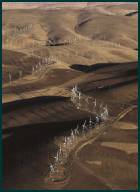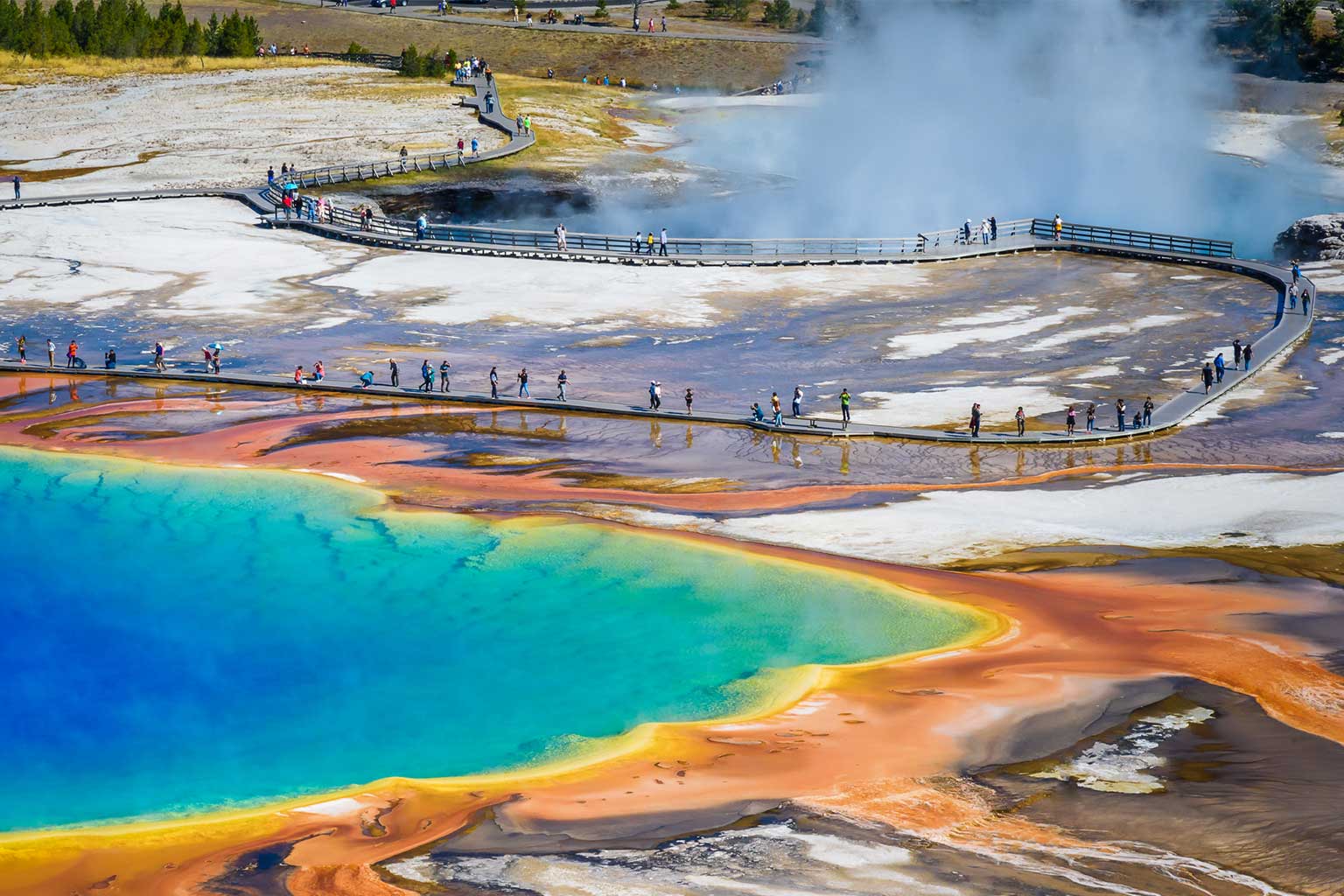
In the United States, the most significant federal incentive for wind energy is the production tax credit (PTC). For each kilowatt-hour of energy produced, this compensates the producer by 1.8 cents. With typical electricity production costs at about 2-4 cents per kilowatt-hour, this is a subsidy of between 50 and almost 100 percent. Although it expired, in October Congress passed a bill extending the credit for one year and expanding it to include a number of additional renewable resources.
Other governmental edicts are even more powerful. Fifteen states have enacted renewable portfolio standards (RPS). These require private utilities to supply a certain percentage of electricity from specified renewable energy technologies. Wind development is the major beneficiary since it typically is the least expensive among renewables, which include solar, biomass, and geothermal. Wind still remains more expensive and less dependable than traditional sources, however.
In spite of subsidies and rapid recent growth, wind power represents a minuscule portion of energy production. At the end of 2003, U.S. wind energy capacity reached 6,374 megawatts (MW), and about 500 MW may be added this year. Projects now under construction or negotiation may add 3,000 MW of wind capacity in the U.S. over the next five years (AWEA 2004a, 2004b).
This amount is dwarfed by the installed electrical capacity for the nation of 953,205 MW (EIA 2004) Thus, wind provides about one and a half per cent of the nation’s electricity generation capacity. But because it produces energy only intermittently (when the wind blows within certain speeds), it actually produces only about two-tenths of one percent of the nation’s electrical energy.
The U.S. Department of Energy has announced a goal of obtaining 5 percent of U.S. electricity from wind by 2020, but the debate over the long-term future of the production tax credit could keep that from happening.
In spite of its relatively advantageous price, wind power is not likely to become a major source of energy. Its disadvantages include its intermittent output (which it shares with solar energy), the need to build massive transmission lines to convey it, environmental problems, and its impact on the transmission system itself. The nation’s wind resources–that is, places that are windy enough on a regular basis–are generally distant from centers of electricity demand. To bring significantly more wind-generated electricity to where it is used, new transmission lines must be built. Most will cover remote areas, many of them environmentally sensitive.
Wind resource areas are often correlated with migratory bird flyways. So not only will giant wind turbines themselves create additional risk for migratory birds, but the impact will be multiplied by the additional transmission lines directly in their paths. The construction of these transmission lines will create a new “sprawl” that encroaches on important habitat as much as urban sprawl does.
Already, siting of transmission lines is very contentious and fraught with local opposition. It can take two to five times as long to site and build transmission lines as it does to site and build new electricity generation capacity–often ten years or more. Siting will likely become even more difficult as transmission lines built to serve wind farms increasingly encroach on environmentally sensitive areas.
Construction of transmission lines requires heavy equipment, new roads, significant materials, as well as construction activities that will conflict with wildlife and ecosystems. The transmission line right-of-way needs to be kept free of tall trees to avoid fires and power outages. Even one tree growing tall enough to touch power lines can wreak havoc over wide areas. A famous outage affecting the eleven western states in 1996 has been traced to just such an event.
The increased conflict that will occur due to bird interactions with transmission lines is troubling for more than the birds. Birds have been the cause of a widespread electrical outage near Phoenix and damaging range fires near Santa Clarita in California (Tobin 2004; CNN 2004). And for those concerned about property rights, the increase in transmission lines increases the role of eminent domain in taking individually owned property to obtain right-of-way.
Already, the transmission system is unable to keep up with demand for electricity. Among the various parts of the electrical system, transmission has suffered the lowest level of investment. One reason is that transmission capacity is inherently costly. It has to be large enough to carry a lot of electricity at peak times, but most of the time the electricity flowing through is low. It is as if major freeways were built for only a few days of use. (Unfortunately, the traffic is heaviest when consumers need electricity the most, due to high temperatures or other factors.)
In addition, the Federal Energy Regulatory Commission (FERC), the agency that oversees transmission across state borders and regulates investment returns, typically allows firms a regulated return only in the 9 percent range, even though a return in the 15 to 18 percent range is necessary in today’s investment climate to stimulate construction of new capacity. Estimates of the investment required to modernize the electric grid in just the eleven western states range upwards of $30 billion (EPRI 2001).
Wind’s low capacity factor (that is, the low percentage of time it actually is working) and poor correlation with load (because of its long distances from population centers and the fact the wind often blows at times when electricity demand is low) further reduce the already low annual average loading of transmission lines. Adding significant amounts of wind will only push the total costs upward due to the spread-out nature of wind development, while making any investment less likely due to environmental concerns and operational difficulties.
Meanwhile, the ability of our system to handle the heavy flows that occur only a few times during the year is decreasing. The nation’s transmission network is already the primary cause of power outages. Additionally, utility companies maintaining the electrical power grid must meet a new requirement: that the wires to the customer be available for delivering power produced by others who don’t maintain the delivery network. In the case of wind (and often solar as well), FERC has placed the costs of those requirements on the transmission owner, not the wind generator. In most other cases, transmission upgrade costs are borne by those who create the need.
All in all, expanded development of wind generation is likely to create additional negative environmental consequences and also discourage investment. Federal policy should not be encouraging wind power through continuation of the production tax credit. It should focus instead on educating the public about the ancillary impacts of various energy sources.
REFERENCES
American Wind Energy Association. 2004a. First Quarter Report: Wind Industry Trade Group Sees Little to No Growth in 2004, Following Near-Record Expansion in 2003. Press release, Washington, DC, May 12. Online: www.awea.org/news/news0405121qt.html. —. 2004b. Wind Industry Statistics. Online: http://www.awea.org/faq/tutorial/ wwt_statistics.html (cited June 2004).
CNN. 2004. No Letup for Firefighters in California, July 19. Online: www.cnn. com/2004/US/West/07/19/wildfires/index.html (cited November 2004).
Energy Information Administration. 2004. Electricity Generating Capacity 2002-2003. Online: eia.doe.gov/cneaf/electricity/page/capacity/capacity. html (cited July 2004).
EPRI. 2001. The Western States Power Crisis: Imperatives and Opportunities. EPRI White Paper. Palo Alto, CA, June.
Tobin, Mitch. 2004. Power Cut Off to 35,000 in Southern Arizona. Arizona Daily Star, June 15.
Thomas Tanton is the principal of T2 & Associates, an energy consulting firm, and a senior adjunct fellow with the Institute of Energy Research. He has spent more than thirty years evaluating public policy related to energy, the environment, and the economy.


